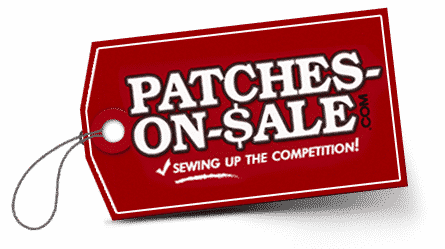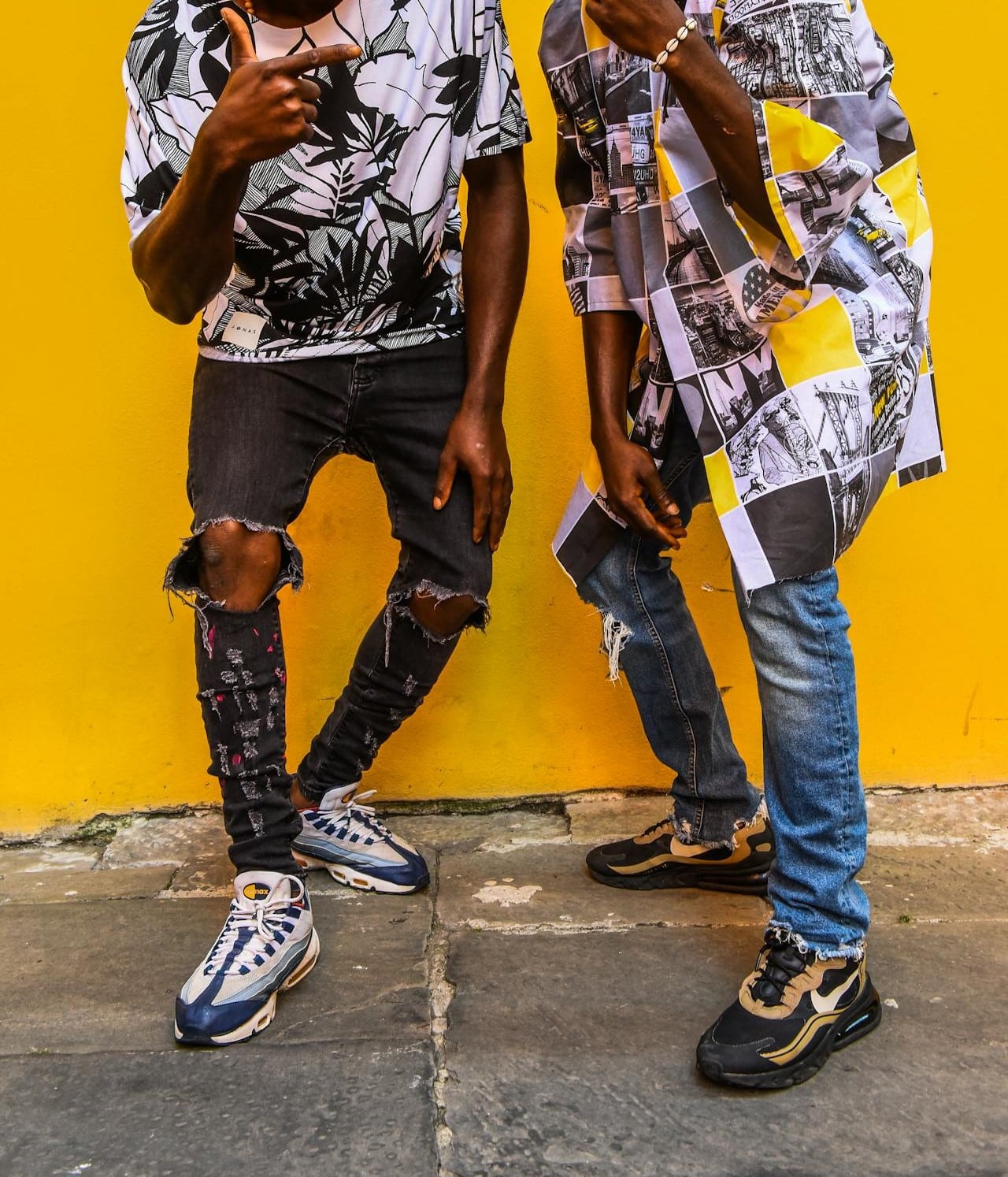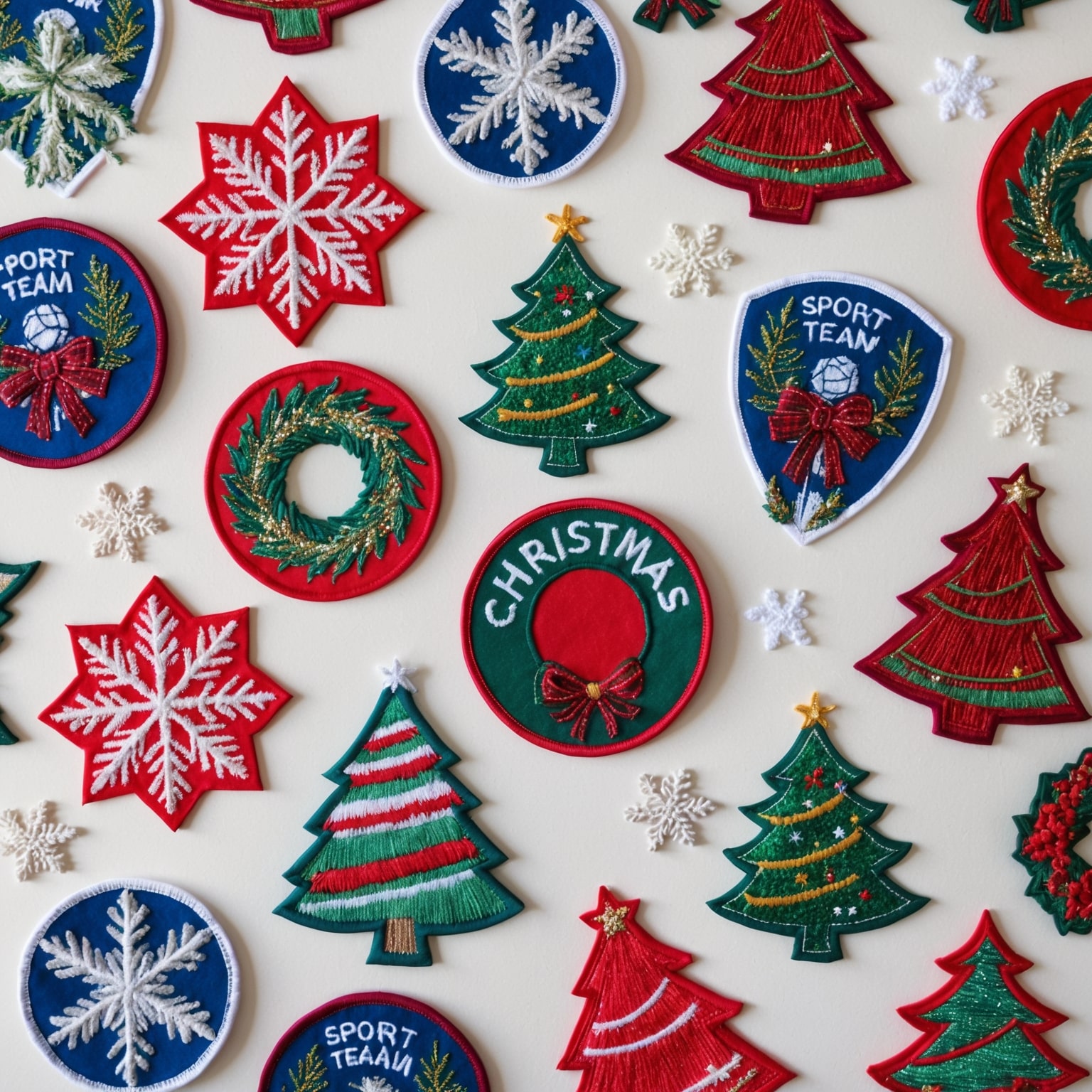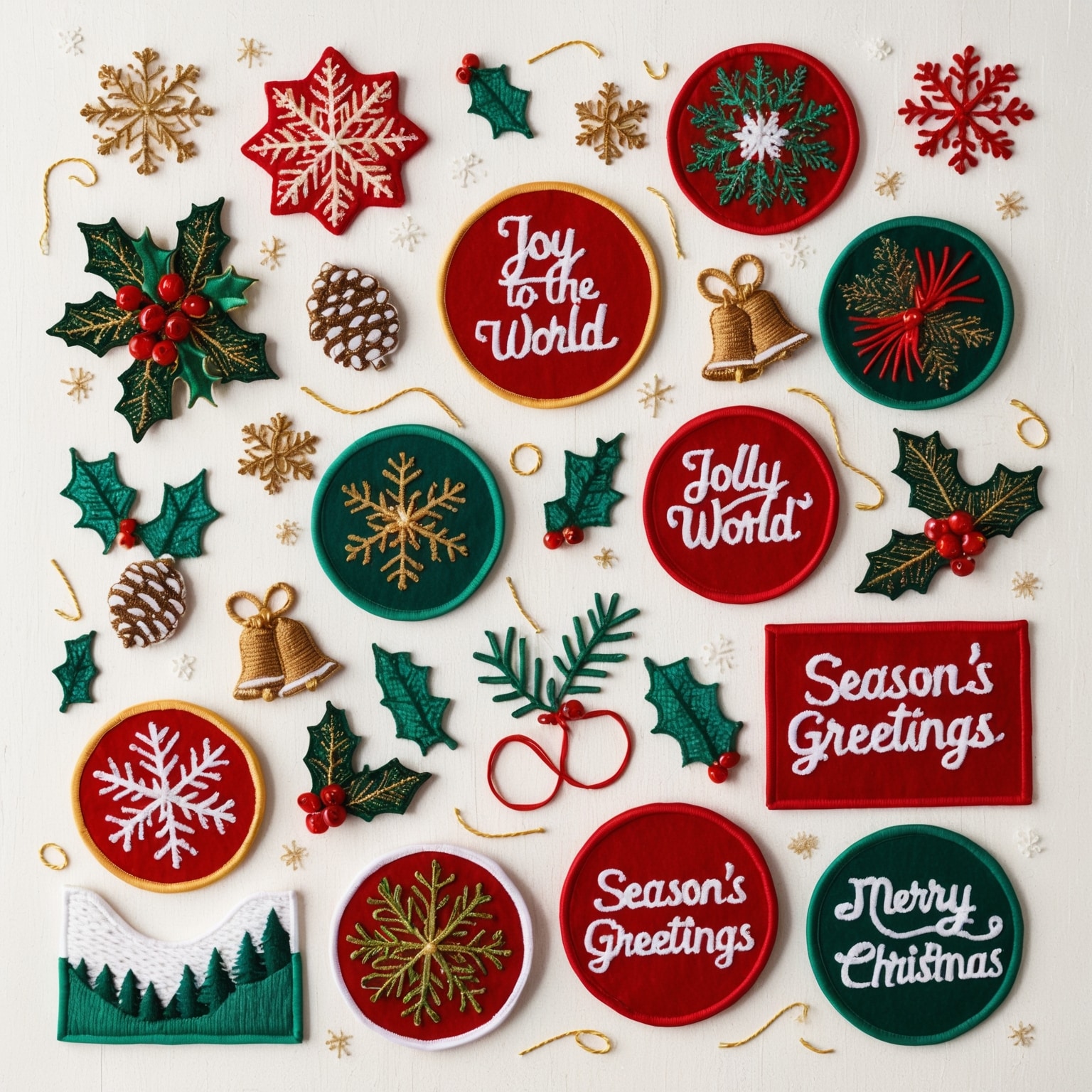Streetwear is more than just a fashion trend; it’s a cultural movement that embodies individuality, self-expression, and rebellion against the norms of mainstream fashion. Since its emergence in the 1980s, streetwear has evolved into a global phenomenon, influencing high fashion, music, art, and popular culture. Central to this movement is the use of custom patches—small, intricately designed pieces of fabric that make powerful statements about identity, affiliation, and personal style.
Custom patches have become a defining element of streetwear, allowing individuals to personalize their clothing, convey their values, and align themselves with specific subcultures. These patches, stitched onto jackets, hoodies, backpacks, and caps, are not merely decorative; they serve as badges of honor, symbols of belonging, and tools for storytelling. In this article, we will explore the role of patches in shaping streetwear identity, discussing their history, cultural significance, and the ways in which they continue to influence fashion and self-expression.
The Evolution of Streetwear and the Rise of Custom Patches
To understand the significance of patches in streetwear, it’s essential to trace the evolution of both the streetwear movement and the use of patches as symbols of identity.
1. The Origins of Streetwear
Streetwear emerged in the late 20th century as a distinct fashion style deeply rooted in the subcultures of skateboarding, punk rock, and hip-hop. These movements, born out of urban environments, were characterized by their rejection of mainstream fashion and their embrace of DIY (do-it-yourself) aesthetics. Streetwear was a way for young people to express their individuality and rebellion through clothing that was both functional and stylish.
Skateboarding culture, in particular, played a pivotal role in shaping the early streetwear scene. Skaters needed durable, comfortable clothing that could withstand the rigors of their sport, leading to the popularity of loose-fitting jeans, graphic tees, and sturdy sneakers. As skateboarding gained popularity, brands like Stüssy, Supreme, and BAPE began to emerge, blending street culture with high fashion elements.
2. The Cultural Significance of Patches
Patches have a long history as symbols of identity and affiliation. Originally used by military units to signify rank and allegiance, patches quickly spread to other groups, including motorcycle clubs, sports teams, and various subcultures. In the punk rock scene of the 1970s, patches became a tool for self-expression, with fans creating and wearing patches that featured band logos, political slogans, and anti-establishment messages.
The DIY ethos of punk culture—where individuals would create their own patches and sew them onto their clothing—resonated with the emerging streetwear movement. Patches became a way for streetwear enthusiasts to customize their outfits, making each piece of clothing unique and reflective of their personal style.
Custom Patches as Expressions of Identity in Streetwear
Custom patches are more than just fashion accessories; they are powerful tools for self-expression and identity formation within the streetwear community. Whether through representing subcultural affiliations, making political statements, or simply showcasing personal style, patches play a crucial role in defining what it means to be part of the streetwear movement.
1. Representing Subcultural Affiliations
Streetwear has always been closely tied to various subcultures, each with its own distinct style, values, and symbols. Custom patches are a way for individuals to represent their affiliation with these subcultures, signaling their membership and connection to a particular group.
Examples of Subcultural Affiliations:
- Skateboarding Culture: Skate culture has been a significant influence on streetwear, and patches featuring skate brands, logos, and graphics are a common sight. These patches not only showcase a person’s love for skateboarding but also connect them to the broader skate community. Brands like Thrasher, Santa Cruz, and Vans have become iconic in the skateboarding world, with their logos often appearing on patches worn by skaters and streetwear enthusiasts alike.
- Punk Rock Influence: Punk culture, with its emphasis on rebellion and anti-authoritarianism, has also left its mark on streetwear. Patches featuring punk bands, slogans, and symbols are often used to convey a sense of defiance and non-conformity. The iconic anarchy symbol, for example, has become synonymous with the punk movement and is frequently seen on patches in streetwear.
- Hip-Hop and Urban Culture: Hip-hop culture, which emerged from the streets of New York City in the 1970s, has had a profound impact on streetwear. Custom patches that reference hip-hop artists, album covers, or graffiti art are popular among those who identify with this culture. The use of vibrant colors, bold fonts, and intricate designs in these patches reflects the creativity and energy of the hip-hop movement.
By wearing patches that represent these subcultures, streetwear enthusiasts can communicate their affiliations and values to others, creating a sense of community and shared identity.
2. Making Political and Social Statements
Streetwear has always been a platform for political and social commentary, and custom patches are often used to convey messages about issues that matter to the wearer. From advocating for social justice to expressing dissent against the status quo, patches allow individuals to make bold statements through their clothing.
Examples of Political and Social Statements:
- Social Justice Causes: Many streetwear brands and individuals use patches to advocate for causes such as racial equality, LGBTQ+ rights, and environmental sustainability. Patches featuring slogans like “Black Lives Matter,” “Love is Love,” or symbols of environmental activism are powerful tools for raising awareness and showing support for these movements.
- Anti-Establishment Messages: In keeping with the rebellious roots of streetwear, patches often feature anti-establishment or anti-authoritarian messages. Whether it’s a patch that critiques government policies, challenges corporate power, or questions societal norms, these patches serve as a form of protest and self-expression.
- Cultural Pride: Custom patches can also be used to celebrate cultural heritage and pride. Patches that feature national flags, traditional symbols, or references to cultural icons allow individuals to express their connection to their roots and share their cultural identity with others.
Through the use of patches, streetwear becomes a canvas for political and social activism, allowing individuals to wear their beliefs and values on their sleeves—literally.
3. Showcasing Personal Style and Creativity
One of the most appealing aspects of custom patches is their ability to transform ordinary clothing into something unique and personal. In streetwear, where individuality and creativity are highly valued, custom patches offer endless possibilities for self-expression and style experimentation.
Examples of Personal Style:
- Artistic Designs: Many streetwear enthusiasts create or commission patches that feature original artwork, from abstract designs to detailed illustrations. These patches turn clothing into wearable art, showcasing the wearer’s creativity and artistic sensibilities.
- Humor and Pop Culture: Custom patches often incorporate humor, pop culture references, or playful designs. Whether it’s a witty slogan, a cartoon character, or a meme, these patches add a fun and lighthearted element to streetwear, reflecting the wearer’s personality and sense of humor.
- Mixing and Matching: Streetwear is known for its eclectic and often unpredictable combinations of styles, and patches play a key role in this mix-and-match approach. By combining patches with different themes, colors, and designs, individuals can create a look that is entirely their own, reflecting their diverse interests and influences.
Custom patches allow streetwear enthusiasts to curate their wardrobes in a way that is both meaningful and visually striking. Whether through subtle details or bold statements, these patches contribute to the overall aesthetic of streetwear and help define the wearer’s unique identity.
The Role of Custom Patches in Streetwear Brands
Custom patches are not only popular among individual streetwear enthusiasts; they also play a significant role in the branding and identity of streetwear labels. Many streetwear brands use custom patches as a way to build their brand’s image, create limited-edition products, and engage with their audience.
1. Building Brand Identity
For streetwear brands, custom patches are a powerful branding tool. By incorporating patches into their product offerings, brands can create a distinctive identity that resonates with their target audience.
Branding Strategies with Custom Patches:
- Signature Patches: Some streetwear brands create signature patches that become synonymous with their brand identity. These patches, often featuring the brand’s logo or a recurring design element, are used across various products, from jackets to caps. Over time, these signature patches become a recognizable symbol of the brand, helping to establish brand loyalty and recognition.
- Collaborations and Limited Editions: Streetwear brands frequently collaborate with artists, designers, or other brands to create limited-edition custom patches. These collaborations not only generate buzz and excitement but also allow the brand to tap into new audiences and subcultures. Limited-edition patches often become collector’s items, adding to the brand’s exclusivity and appeal.
- Storytelling Through Patches: Many streetwear brands use custom patches to tell a story or convey a message. Whether it’s a patch that celebrates the brand’s history, pays tribute to a cultural icon, or supports a social cause, these patches help build a narrative around the brand, making it more relatable and meaningful to consumers.
By integrating custom patches into their branding strategies, streetwear labels can differentiate themselves in a crowded market and create a deeper connection with their audience.
2. Creating Limited-Edition and Collectible Items
In the world of streetwear, exclusivity is key. Custom patches offer a way for brands to create limited-edition and collectible items that drive demand and create a sense of urgency among consumers.
Strategies for Limited-Edition Patches:
- Capsule Collections: Many streetwear brands release capsule collections that feature custom patches as a key design element. These collections are typically produced in limited quantities, making the patches—and the items they are attached to—highly sought after by collectors and fans.
- Seasonal and Event-Specific Patches: Brands often create custom patches for specific seasons, events, or collaborations. For example, a brand might release a patch to commemorate a major music festival, a significant cultural event, or a collaboration with a well-known artist. These patches are typically available for a limited time, adding to their desirability.
- Collector’s Editions: Some brands produce collector’s edition patches that are designed to be collected and traded. These patches are often numbered or feature unique designs, making them valuable to collectors. In some cases, brands may release a series of patches over time, encouraging consumers to collect the entire set.
By offering limited-edition custom patches, streetwear brands can create a sense of exclusivity and excitement, driving sales and building brand loyalty.
3. Engaging with the Streetwear Community
Streetwear is a culture built on community and connection, and custom patches provide a way for brands to engage with their audience in a meaningful way. Through the use of patches, brands can foster a sense of belonging and involvement among their fans.
Community Engagement Strategies:
- Interactive Campaigns: Some streetwear brands use custom patches as part of interactive campaigns that encourage consumer participation. For example, a brand might run a contest where fans can design their own patches, with the winning design being produced and sold by the brand. This not only engages the community but also gives consumers a sense of ownership and involvement in the brand.
- Pop-Up Shops and Events: Custom patches are often featured at pop-up shops, events, and brand activations, where consumers can purchase exclusive patches or even create their own. These events provide an opportunity for fans to connect with the brand and with each other, reinforcing the sense of community within the streetwear culture.
- Social Media and Online Communities: Many streetwear brands use social media to showcase custom patches and encourage fans to share how they’ve incorporated patches into their own style. By creating hashtags, running challenges, or featuring user-generated content, brands can build an online community around their patches, fostering engagement and loyalty.
Custom patches are a powerful tool for streetwear brands to build and maintain a strong connection with their audience, both online and offline.
The Future of Custom Patches in Streetwear
As streetwear continues to evolve, custom patches are likely to remain a key element of the culture. Advances in technology, changes in consumer preferences, and the ongoing influence of subcultures will shape the future of custom patches in streetwear.
1. Technological Innovations
Advances in technology are likely to lead to new possibilities for custom patch design and production. For example, 3D printing and digital embroidery techniques could allow for more intricate and detailed patch designs, while new materials could offer greater durability and versatility.
- 3D Embroidery: 3D embroidery techniques can create raised, textured designs that add depth and dimension to custom patches. This allows for more complex and visually striking designs that stand out on clothing and accessories.
- Smart Patches: As wearable technology becomes more prevalent, we may see the emergence of “smart patches” that incorporate digital elements, such as LED lights or NFC chips, allowing for interactive or programmable features.
These technological innovations could open up new creative possibilities for streetwear enthusiasts and brands alike, allowing for even more personalized and unique custom patches.
2. Sustainability and Ethical Fashion
As consumers become more conscious of the environmental and ethical impact of their fashion choices, custom patches could play a role in promoting sustainability within the streetwear community.
- Eco-Friendly Materials: The use of recycled or organic materials in custom patch production could appeal to environmentally conscious consumers. Brands that prioritize sustainability may choose to use eco-friendly patches as a way to align with their values and communicate their commitment to ethical fashion.
- Upcycling and Customization: Custom patches can be used as part of upcycling initiatives, where old or damaged clothing is given a new lease on life through the addition of patches. This not only reduces waste but also encourages creativity and individuality in fashion.
By embracing sustainability, custom patches can continue to play a role in streetwear while aligning with the values of the next generation of consumers.
3. Continued Influence of Subcultures
Subcultures will continue to influence the design and use of custom patches in streetwear. As new subcultures emerge and existing ones evolve, custom patches will reflect these changes, serving as a visual representation of the shifting landscape of streetwear.
- Emerging Subcultures: As new subcultures and movements emerge, they will bring their own symbols, values, and aesthetics to the streetwear scene. Custom patches will continue to serve as a way to express affiliation with these groups and communicate their identity to others.
- Global Influences: Streetwear is a global phenomenon, and the influence of different cultures and regions will continue to shape the design and use of custom patches. As streetwear draws inspiration from diverse sources, we can expect to see a wider variety of patch designs that reflect global perspectives and traditions.
The dynamic nature of streetwear and its ongoing connection to subcultures ensure that custom patches will remain a vital part of the culture for years to come.
Custom Patches as Defining Elements of Streetwear Identity
Custom patches have become an essential element of streetwear, serving as powerful tools for self-expression, identity formation, and cultural connection. Whether used to represent subcultural affiliations, make political statements, or showcase personal style, custom patches allow individuals to personalize their clothing and communicate their values to the world.
For streetwear brands, custom patches offer a way to build brand identity, create limited-edition products, and engage with the community. As the streetwear movement continues to evolve, custom patches will remain a defining feature, shaping the way individuals and brands express themselves within this vibrant and ever-changing culture.
If you are interested in purchasing high-quality custom patches, feel free to call us at 1-877-503-8485 or fill out one of our FREE quotes here.




